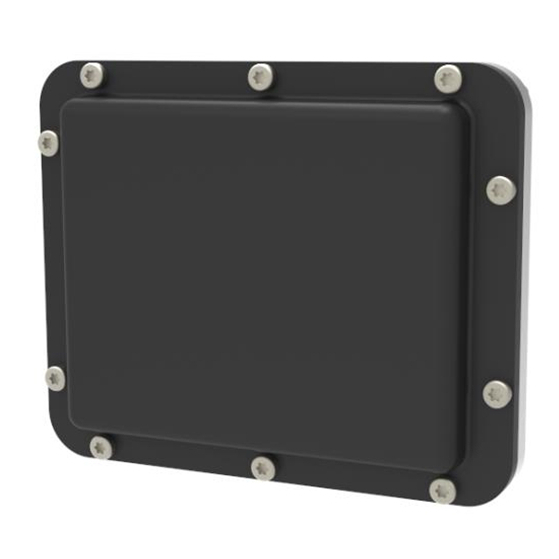Integration and Application of Traffic Radar Technology in Mobile Enforcement Vehicles
With the rapid development of intelligent transportation systems, traffic radar technology plays an increasingly important role in traffic enforcement due to its high precision, all-weather operation capability, and powerful data processing ability. Especially in mobile enforcement vehicles, integrating advanced traffic radar technology has become one of the important means to improve traffic management efficiency. This article aims to explore the integrated application of traffic radar technology in mobile enforcement vehicles, analyze its technical advantages, detailed technical details, and practical application cases.
In recent years, with the acceleration of urbanization, road traffic pressure has been increasing, and traffic violations have also shown diverse characteristics. Although traditional fixed traffic monitoring devices can effectively monitor the situation of some road sections, they are inadequate for highly mobile illegal activities such as illegal racing and frequent lane changes. In this context, mobile enforcement vehicles have emerged, which not only have the advantages of flexibility and maneuverability, but also can achieve real-time monitoring and enforcement of traffic violations by integrating advanced traffic radar technology.

1. Overview of Traffic Radar Technology
Traffic radar mainly adopts millimeter wave radar technology, which has the characteristics of long detection range, high resolution, and strong anti-interference ability. Millimeter wave radar can operate stably under various climatic conditions, unaffected by factors such as lighting, rain, and snow, making it particularly suitable for the field of traffic monitoring. In addition, by combining with technologies such as image recognition and big data analysis, traffic radar can achieve accurate acquisition of various information such as vehicle speed, position, and direction.
Firstly, millimeter wave radar emits a series of high-frequency electromagnetic wave signals with short wavelengths that can effectively penetrate meteorological conditions such as rain and fog. During signal propagation, when it encounters a target object such as a vehicle, pedestrian, or other obstacle, some of the signal will be reflected back into the radar system. Next, the radar receiver captures these reflected signals and converts them into electrical signals. By measuring the time from signal transmission to reception, radar can calculate the distance to the target. In addition, using the Doppler effect, radar can also analyze the frequency changes of signals to determine the velocity of targets. Then, through digital signal processing (DSP), the radar system can perform complex analysis on the received signals. This process can not only extract the position information of the target, but also generate detailed information such as the shape, size, and motion trajectory of the target. This enables millimeter wave radar to maintain high detection accuracy in complex environments.

2. Basic components of mobile enforcement vehicles
Mobile enforcement vehicles are usually equipped with various devices to achieve comprehensive traffic monitoring and management, mainly including:
Radar system: used for speed monitoring and traffic flow analysis.
Video surveillance system: Real time recording of road conditions through high-definition cameras to provide evidence for enforcement.
Data processing system: Analyze and store collected data to generate enforcement reports.
On mobile enforcement vehicles, the matching of radar and video data mainly relies on algorithmic technology. Firstly, ensure that the timestamps of the radar data and video frames are consistent through time synchronization, and then convert the target position in the radar coordinate system to the video coordinate system. Next, use feature extraction techniques to identify targets from the video and perform preliminary matching with targets detected by radar. In order to improve the accuracy of matching, commonly used algorithms include Hungarian algorithm and Kalman filter. The Hungarian algorithm finds the optimal target pairing by constructing a cost matrix, while the Kalman filter achieves continuous tracking by predicting the target state and updating it based on video data. In addition, multi-sensor data fusion techniques such as Bayesian fusion can further improve the accuracy and robustness of target recognition. Ultimately, these algorithms achieve precise matching between radar and video data, ensuring accurate identification and recording of traffic violations on mobile enforcement vehicles.
3. Application of Traffic Radar Technology in Mobile Enforcement Vehicles
Mobile enforcement vehicles can detect the speed of passing vehicles in real time through integrated traffic radar technology, and automatically identify and capture speeding vehicles. Once a speeding vehicle is detected, the system will automatically trigger the high-definition camera to capture footage and record the vehicle information.
Combined with video surveillance systems, traffic radar technology can automatically identify various traffic violations. For example, situations such as running a red light or not wearing a seat belt can be quickly identified and recorded by enforcement personnel through the linkage of radar and video. The automation of this process reduces the occurrence of human errors.
The large amount of data generated by mobile enforcement vehicles can not only be used for case handling, but also provide valuable data support for traffic management. Through in-depth analysis of data such as traffic flow and accident frequency, traffic management departments can develop more scientific management strategies. For example, analyzing the peak hours of a certain road section and adjusting the timing of traffic lights can effectively alleviate traffic congestion.
After a traffic accident, mobile enforcement vehicles can quickly arrive at the scene and collect evidence using radar and video systems. By comprehensively recording the accident scene, enforcement personnel can quickly and accurately reconstruct the accident process, providing strong support for the determination of accident responsibility.
